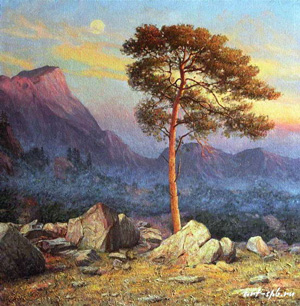На се´вере ди´ком стои´т одино´ко
На го´лой верши´не сосна´
И дре´млет, кача´ясь, и сне´гом сыпу´чим
Оде´та, как ри´зой, она´.
И сни´тся ей всё, что в пусты´не далёкой,
В том кра´е, где со´лнца восхо´д,
Одна´ и грустна´ на утёсе горю´чем
Прекра´сная па´льма растёт.
